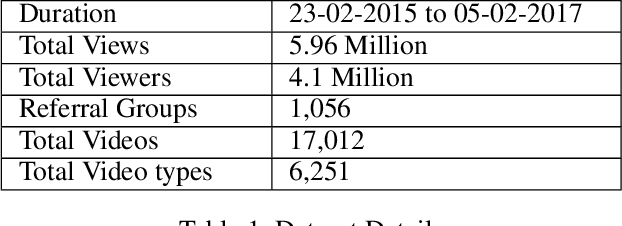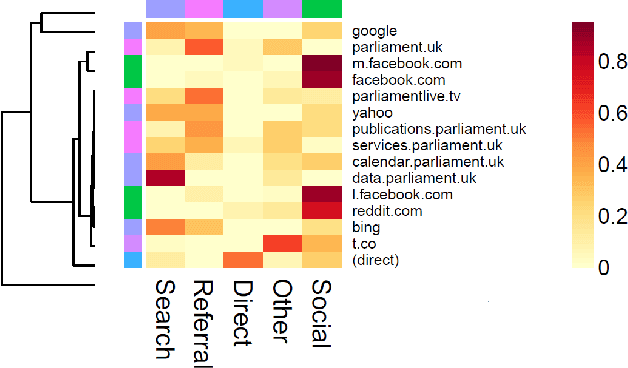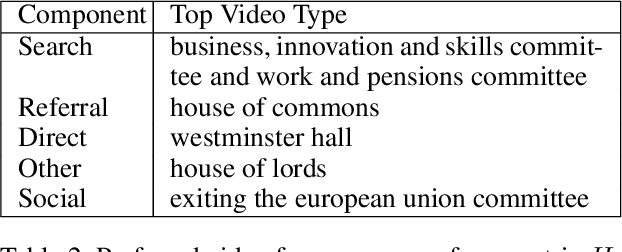Edward Wood
Discovery of the Content and Engagement with the Content
Jun 15, 2022


Abstract:In the second half of the 20th century, Parliament allowed broadcasters to transmit radio and eventually television coverage of debates and meetings of select committees. More recently, in an effort to further improve transparency and citizen engagement, the UK Parliament started publishing videos of these debates and meetings itself, and tweeting details of debates as they happened. In this paper, we attempt to characterise how people engage with video data of Parliamentary debates by using more than two years of Google Analytics data around these videos. We analyse the patterns of engagement - how do they land on a particular video? How do they hear about this video, i.e., what is the (HTTP) referrer website that led to the user clicking on the video? Once a user lands on a video, how do they engage with it? For how long is the video played? What is the next destination? etc. Answering these questions is an important first step towards understanding why and how people use Parliamentary videos, and therefore, how the video delivery platform should be adapted and personalised for the needs of the citizens of the country. Taking inspiration from An, Kwak, and Jansen (2017), we employ Non-Negative Matrix Factorization (NMF) (Lee and Seung, 1999) on the video views matrix to identify different archetypes of users, and identify archetypes. A deeper examination of the archetypes we find reveals that they are primarily distinguished by how they land on the video page: Search (i.e., through a search engine), Referral (i.e., from other Parliamentary websites), Direct (i.e., through a direct link, which is embedded on another website), Social (i.e., through a social platform such as Facebook or Twitter) and Others.
 Add to Chrome
Add to Chrome Add to Firefox
Add to Firefox Add to Edge
Add to Edge